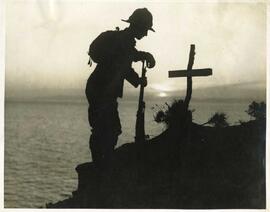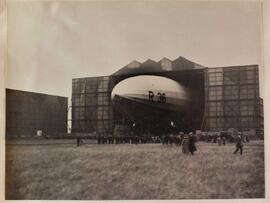Papers relating to Gibbs' early career, 1917-1927, including typescript copies [1972] of combat reports written by Gibbs, 17 Sqn, Macedonia, 1917-1918; typescript notes by Gibbs entitled 'Service experiences', 1926; typescript Staff College essay entitled 'Leadership and morale', 1927. Nine typescript texts of lectures by Gibbs, 1948-1972, on the RAF in World War Two, post war airpower, India and the Indian Air Force and the North Atlantic Treaty Organisation (NATO), also 'Air power in modern war', by MRAF Arthur William Tedder, 1st Baron Tedder of Glenguin, 1947. Papers relating to Gibbs' career in the RAF, 1945-1954, including correspondence and typescript notes by Gp Capt I C Bird on the war efforts of India, South Africa and the Colonies [1948]; letter andgraph by Wg Cdr J D Warne, dated 1949, on numbers of sorties flown and losses suffered by the Luftwaffe and the RAF during the Battle of Britain, 1940; typescript copies of correspondence between Gibbs and Adm Louis Francis Albert Victor Nicholas Mountbatten, 1st Earl Mountbatten of Burma, Commander-in-Chief, Mediterranean, 1953; typescript report by Gibbs entitled 'Report on the progressand the policy problems of the Indian Air Force', 1954. Papers and correspondence, 1955-1984, including typescript article by Gibbs entitled 'The lessons of Skybolt, Britain's new defence plans', with letter from Sir Hugh (Nicholas) Linstead MP, 1963; typescript memorandum by MRAF Sir John Cotesworth Slessor entitled 'Integration of the Services within the new defence organisation', 1964;correspondence with Dr G Vincent Orange, History Department, University of Canterbury, Christchurch, New Zealand, dated 1982, concerning research for A biography of Air Chief Marshal Sir Keith Park GCB, KBE, MC, DFC, DCL (Methuen, London, 1984), with copy of letter from ACM Sir Keith Rodney Park, Air Commander-in-Chief, South East Asia to MRAF Sir Charles Frederick Algernon Portal, Chief of the Air Staff, relating to the possible replacement of Gibbs as Chief Air Staff Officer, Supreme Headquarters South East Asia Command [1945]. Copies of Gibbs' letters to the press, 1955-1982, relating chiefly to defence issues, service pensions, capital punishment, immigration and Rhodesia. Publications and articles, 1928-1961, including copy of Air Ministry Air Publication 1308 entitled 'A selection of lectures and essays from the work of officers attending the fifth course at the Royal Air Force Staff College, 1926-1927', (HMSO, London, 1928), including article by Gibbs 'Lecture on fighter squadrons in air defence'; article by Gibbs 'Aircraft types and strategical mobility', Journal of the Royal Air Force College, 1930; booklet by Gen Sir Archibald Percival Wavell entitled 'Generals and Generalship' (reprinted from The Times, London, 1941); three editions of Impact magazine, subtitled 'US Tactical air power in Europe', May 1945, 'Strategic air victory in Europe', Jul 1945, and 'Air victory over Japan', Sep-Oct 1945; restricted pamphlet by MRAF Hugh Montague Trenchard, 1st Viscount Trenchard of Wolfeton, entitled 'Air power', 1946; restricted pamphlet by US Gen Carl A Spaatz entitled 'American views on air power', 1947; article by ACM Sir Keith Rodney Park entitled 'Background to the Blitz, from Hawker Siddeley Review, Dec 1951; article by Gibbs 'The development of defence in NATO's second decade', The British Survey, Feb 1959; article entitled 'Maintaining the deterrent in the future', by Gibbs, The Aeroplane, Mar 1961.



